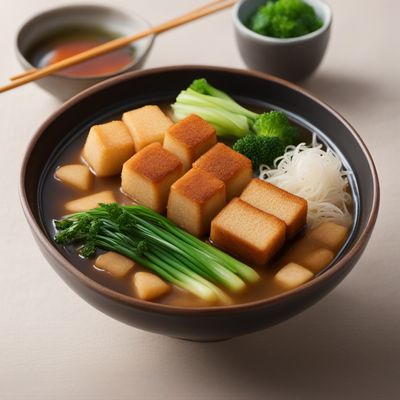
Ingredient
Fish paste or surimi
The Versatile Seafood Delight: Unveiling the Wonders of Fish Paste
Fish paste has a smooth and slightly elastic texture, with a mild and delicate flavor. It is often used as a binding agent in seafood products like fish cakes, fish balls, and imitation crab sticks. The versatility of fish paste allows it to be incorporated into a wide range of dishes, both in Asian and Western cuisines.
Origins and history
The origins of fish paste can be traced back to ancient China, where it was first developed as a way to preserve fish. The technique of making fish paste spread to Japan and other Asian countries, where it became a staple ingredient in traditional dishes. In recent years, fish paste has gained popularity in Western countries as well, thanks to the rise of sushi and other Asian-inspired cuisines.
Nutritional information
Fish paste is a good source of lean protein and contains essential nutrients like omega-3 fatty acids. It is also low in fat and calories, making it a healthier alternative to fatty meats. However, some commercially produced fish paste products may contain additives or preservatives, so it is important to read the label and choose options with minimal ingredients.
Allergens
Fish
How to select
When selecting fish paste, opt for brands that use high-quality white fish meat and minimal additives. Check the label for the list of ingredients and choose options without artificial colors or flavors. Freshly made fish paste from local fish markets or specialty seafood stores can also provide a more authentic and flavorful experience.
Storage recommendations
Fish paste is typically produced on a large scale by commercial seafood processors. However, it is possible to make fish paste at home using fresh white fish meat and a food processor. Simply blend the fish meat until it forms a smooth paste, adding a small amount of salt or other seasonings if desired.
Preparation tips
To maintain the freshness and quality of fish paste, store it in the refrigerator and consume it within a few days of opening. Keep the container tightly sealed to prevent oxidation and spoilage. It is best to use fish paste in recipes that require cooking or frying to ensure food safety.
Substitutions
Fish paste is commonly used in Asian cuisines, particularly in dishes like fish cakes, fish balls, and sushi rolls. It can also be used as a filling for dumplings or as a flavoring agent in soups and stir-fries. In Western cuisines, fish paste is often used to make imitation seafood products like crab sticks or shrimp paste.
Availability
Fish paste is commonly available in Asian grocery stores, supermarkets, and specialty seafood stores. It may be less common or harder to find in other regions or countries.
More ingredients from this category
Recipes using Fish paste or surimi » Browse all

Anguillan-style Rihaakuru dhiya
Savory Anguillan Fish Stew with Rihaakuru

Venetian-style Surubí Stew
Laguna Delicacy: Venetian-style Surubí Stew

Indo-style Hot Pot
Spicy and Flavorful Indo Hot Pot: A Fusion of Chinese and Indonesian Cuisine

Kake Soba with a Twist
Savory Delight: A Modern Twist on Traditional Kake Soba

Oden - Japanese Comfort Food Delight
Savory Simmered Delights: Oden Recipe

Christmas Island Spiced Grilled Fish
Tropical Delight: Grilled Fish with Christmas Island Flavors

Homemade Nigiri Sushi
Delicate Bites of Freshness: Homemade Nigiri Sushi

Homemade Udon Noodle Soup
Savor the Soul: Homemade Udon Noodle Soup

Homemade Ise Udon
Savor the Delights of Homemade Ise Udon: A Traditional Japanese Noodle Dish

Peruvian-style Gindara Teriyaki
Andean Delight: Peruvian-inspired Gindara Teriyaki

Homestyle Hawaiian Saimin
Island Comfort: Homestyle Hawaiian Saimin

Miso Nikomi Udon
Umami Delight: Hearty Miso Nikomi Udon
